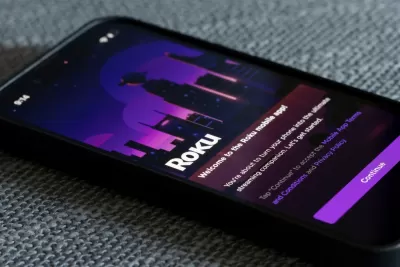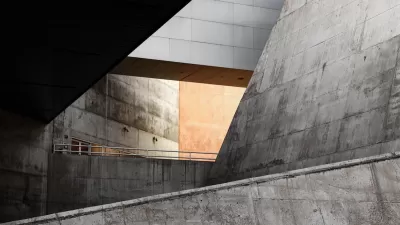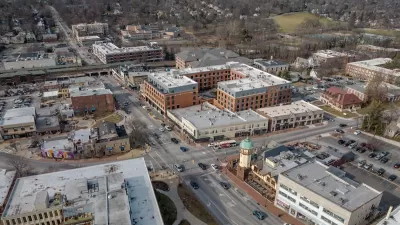A streaming box screen saver exhibits better urbanism than many real-life cities.

Have you ever wanted to live in a screen saver? As Luke Winkie explains in a New York Times article, some users of Roku, a TV streaming device, are finding themselves wishing they could move into what fans are calling ‘Roku City,’ the hypnotic animated city that scrolls past on the Roku home screen.
If you let a Roku idle long enough, you will eventually be transported to a magenta cityscape beyond time and space. The screen slowly pans across cozy diners, gothic mansions and a sumptuous, moonlit lagoon, all sheathed in a groovy, ‘Blade Runner’-esque color palette.
Designed by artist Kyle Jones, ‘Roku City’ is meant to serve as a vehicle for advertisements embedded as ‘billboards’ in the animated metropolis. “The animation hit Roku servers without much fanfare in 2018, but its status slowly grew over the next few years.” During the early part of the pandemic, interest in the screen saver skyrocketed as fans began to tweet about the allure of the fictional city, and Roku itself got in on the urbanism joke.
Roku City is dynamic, too. “As the summer months left the calendar, a wash of auburn trees began to streak across a new district and a fresh set of spooky cafes — and the requisite filmic easter eggs — filled the city block.”
The attractive urbanism and perennial golden hour leaves one to wonder, how much does rent in Roku City cost?
FULL STORY: Pack Your Bags, We’re Moving to ‘Roku City’

Alabama: Trump Terminates Settlements for Black Communities Harmed By Raw Sewage
Trump deemed the landmark civil rights agreement “illegal DEI and environmental justice policy.”

Planetizen Federal Action Tracker
A weekly monitor of how Trump’s orders and actions are impacting planners and planning in America.

The 120 Year Old Tiny Home Villages That Sheltered San Francisco’s Earthquake Refugees
More than a century ago, San Francisco mobilized to house thousands of residents displaced by the 1906 earthquake. Could their strategy offer a model for the present?

LA’s Tree Emergency Goes Beyond Vandalism
After a vandal destroyed dozens of downtown LA trees, Mayor Karen Bass vowed to replace them. Days later, she slashed the city’s tree budget.

Sacramento Leads Nation With Bus-Mounted Bike Lane Enforcement Cameras
The city is the first to use its bus-mounted traffic enforcement system to cite drivers who park or drive in bike lanes.

Seattle Voters Approve Social Housing Referendum
Voters approved a corporate tax to fund the city’s housing authority despite an opposition campaign funded by Amazon and Microsoft.
Urban Design for Planners 1: Software Tools
This six-course series explores essential urban design concepts using open source software and equips planners with the tools they need to participate fully in the urban design process.
Planning for Universal Design
Learn the tools for implementing Universal Design in planning regulations.
Ada County Highway District
Clanton & Associates, Inc.
Jessamine County Fiscal Court
Institute for Housing and Urban Development Studies (IHS)
City of Grandview
Harvard GSD Executive Education
Toledo-Lucas County Plan Commissions
Salt Lake City
NYU Wagner Graduate School of Public Service





























